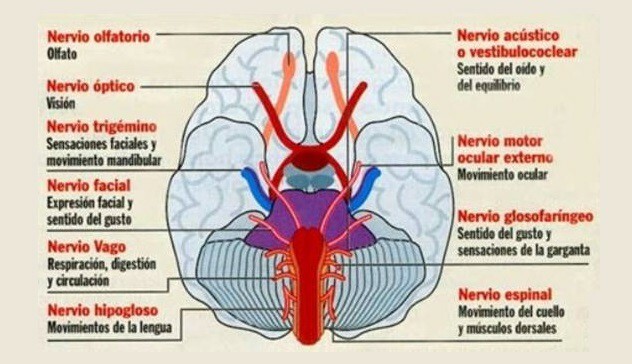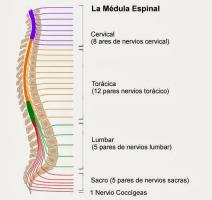Autonomic nervous system: structures and functions
Throughout our lives we carry out a large number of actions. We run, we jump, we talk ...
All these acts are voluntary elements that we do on a voluntary basis. However, also we do a lot of things that we are not even aware of, many of which in fact are the ones that keep us alive and with the possibility of volunteering, such as the control of the heart and respiratory rate, the acceleration or deceleration of the physiological systems or the digestion.
At the neurological level, these two types of actions are carried out by two differentiated systems, conscious actions being carried out by the somatic nervous system. and the unconscious by the autonomic nervous system.
- Related article: "Parts of the Nervous System: anatomical structures and functions"
What is the vegetative nervous system?
The autonomic nervous system, also called the vegetative nervous system, is one of the two divisions that have been made of the nervous system at the functional level. This system is responsible for connecting the neurons of the central nervous system with those of the rest of the body systems and organs, forming part of both the central and peripheral nervous systems. Its basic function is the control of the internal processes of the organism, that is to say of the viscera, being the processes governed by this system beyond our control.
The connections with the different target organs of this system are both motor and sensitive, having both efferences and afferences. It is therefore a system that sends information from the parts of the brain to the organs, causing in them a specific reaction or action while at the same time collects information about its status and sends it to the brain, where it can be processed and act on consequence. Despite this, in the autonomic nervous system the presence of efferences predominates, that is to say, its function is mainly to emit signals in the direction of the organs.
The neurons of the autonomic nervous system that connect with the various organs of the body do so as a general rule through the ganglia, having pre and postganglionic neurons. The action of the preganglionic neuron is always due to the action of acetylcholine, but in the neuron that interacts between the ganglion and the target organ, the released hormone will vary according to the subsystem (acetylcholine on parasympathetic nervous system Y noradrenaline in the sympathetic nervous system).
Principal function
The autonomic nervous system is one of the most vital systems to keep us alive, mainly due to the function it performs.
The main function of this system is the control, as we have already indicated above, of unconscious and involuntary processes, such as respiration, blood circulation or digestion. It is responsible for keeping the processes of the internal organs and the viscera in shape and activated, while allowing the detection and control of internal problems.
It also prepares us to deal with specific situations mediated by the environment, such as the secretion of saliva or enzymes. digestive systems at the sight of food, activation against possible threats or deactivation and regeneration of the system through of rest.
Any organism with the complexity of vertebrate animals needs a complete nervous system, with central nervous system and peripheral nervous system, to coordinate the different parts of the organism. And among invertebrates we also find simple nervous systems, and other complex ones, such as that of the octopus. This is because among animals it is necessary to adapt to changes in the environment quickly, when moving, unlike fungi and plants.
What controls the autonomic nervous system?
As part of the nervous system in charge of controlling the correct unconscious visceral functioning, the autonomic or vegetative nervous system is It is found innervating most organs and body systems, with the exception of the muscles and joints that govern voluntary movement.
Specifically, we can find that this system controls the smooth muscles of the viscera and various organs such as the heart or lungs. It also participates in the synthesis and expulsion of most of the secretions to the outside of the body and part of the endocrines, as well as in metabolic processes and reflexes.
Some of the organs and systems in which this system participates are the following.
1. View
The autonomic nervous system governs pupil aperture and the ability to focus the gaze, connecting with the muscles of the iris and the whole of the eye.
2. Heart and blood vessels
Heartbeat and blood pressure They are fundamental elements for the human being, which are governed unconsciously. In this way, it is the vegetative nervous system that is in charge of regulating these vital elements that keep us alive second by second.
3. Lungs
While we are able to control our breathing to some extent the fact of breathing continuously is not consciousAs a general rule, neither is the rhythm with which we need to inhale. Thus, respiration is also partially controlled by the autonomic nervous system.
4. Digestive tube
Through food, the human being is able to acquire the various nutrients that the body needs to continue functioning. Although the behavior of eating is consciously controlled, the process by which the digestive tract transforms food and acquires the necessary components from it, not being the set of actions that the body performs during digestion involuntary and governed by the autonomic nervous system.
5. Genitals
Although the sexual act itself is carried out consciously, the set of elements and reactions physiological conditions that allow its realization are mainly controlled by the autonomic system what governs processes such as erection and ejaculation. In addition, these processes are complicated when a feeling of fear or anxiety is experienced, something that links it to various physiological states.
6. Secretion of enzymes and residues
Tears, sweat, urine and feces are some of the substances that the body expels into the environment. Its secretion and expulsion is due and / or may be altered in part due to the functioning of the autonomic nervous system. The same goes for the secretion of digestive enzymes and saliva.
Parts of the autonomic nervous system
Within the autonomic nervous system we can find a series of subdivisions of great importance, which perform differentiated functions. Specifically the sympathetic and parasympathetic nervous systems stand out, which perform opposite functions in order to allow the existence of a balance in the activity of the organism.
You can also find a third system, the enteric system, which is primarily responsible for the control of the digestive tract.

1. Sympathetic nervous system
Being one of the divisions of the autonomic nervous system, the sympathetic system is responsible for preparing the body for action, facilitating the fight or flight response to threatening stimuli. For this, it produces an acceleration of some systems of the organism and inhibits the functioning of others, making a great expenditure of energy in the process.
The mission of this part of the autonomic nervous system is to prepare the body to respond agilely to situations risk, reducing priority to certain biological processes and giving them to those that allow us to react with agility. That is why its function has ancestral characteristics, although it is no less useful for that; it adapts to the situations of modern life and can be activated by relatively abstract ideas, such as the certainty that we will be late for a company meeting.
2. Parasympathetic nervous system
This branch of the autonomic nervous system is what is responsible for returning to a state of rest after a period of high energy expenditure. It is responsible for regulating and slowing down the body, allowing energy to be recovered while allowing the operation of various systems. In other words, it is responsible for the regeneration of the body, although it also intervenes in the generation orgasm, something that does not seem to have much to do with the rest of the functions with which it shares a root biological.
3. Enteric nervous system
While the parasympathetic nervous system also has a clear influence on the digestive tract, There is a subdivision of the autonomic nervous system that specializes almost exclusively in the system by which we incorporate nutrients into our body. It is the enteric system, which innervates the digestive tract and regulates its normal functioning.
As it takes care of one of the most important systems for survival, the enteric nervous system has to be fundamentally automatic, and constantly worry about maintaining the biochemical balance that exists in the different environments of the organism, adapting to the alterations that may occur depending on what is ingested, the state of activation, the hormones that circulate in the blood, etc.
Bibliographic references:
- Cooke, S.F., Bliss, T.V. (2006). Plasticity in the human central nervous system. Brain. 129: pp. 1659 - 1673.
- Kandel, E.R.; Schwartz, J.H. and Jessell, T.M. (2001). Principles of neuroscience. Fourth edition. McGraw-Hill Interamericana. Madrid.
- Guyton, A. C. & Hall, J. (2006). Treaty of Medical Physiology. Elsevier; 11th edition.
- Purves, D., Augustine, G.J., Fitzpatrick, D., Hall, W.C., LaMantia, A.S., McNamara, J.O., White, L.E. (2008). Neuroscience. Sinauer Associates.
- Schatzberg, A., Nemeroff, C.S. (2006). Treatise on psychopharmacology. Elsevier.
- Snell, R.D. (1997). Autonomic nervous system. In: Clinical Neuroanatomy, (pp 449-478). Buenos Aires: Pan-American.
- Tortora, G.J., Derrickson, B. (2016). Principles of Anatomy and Physiology (15th edition). Hoboken: Wiley.

